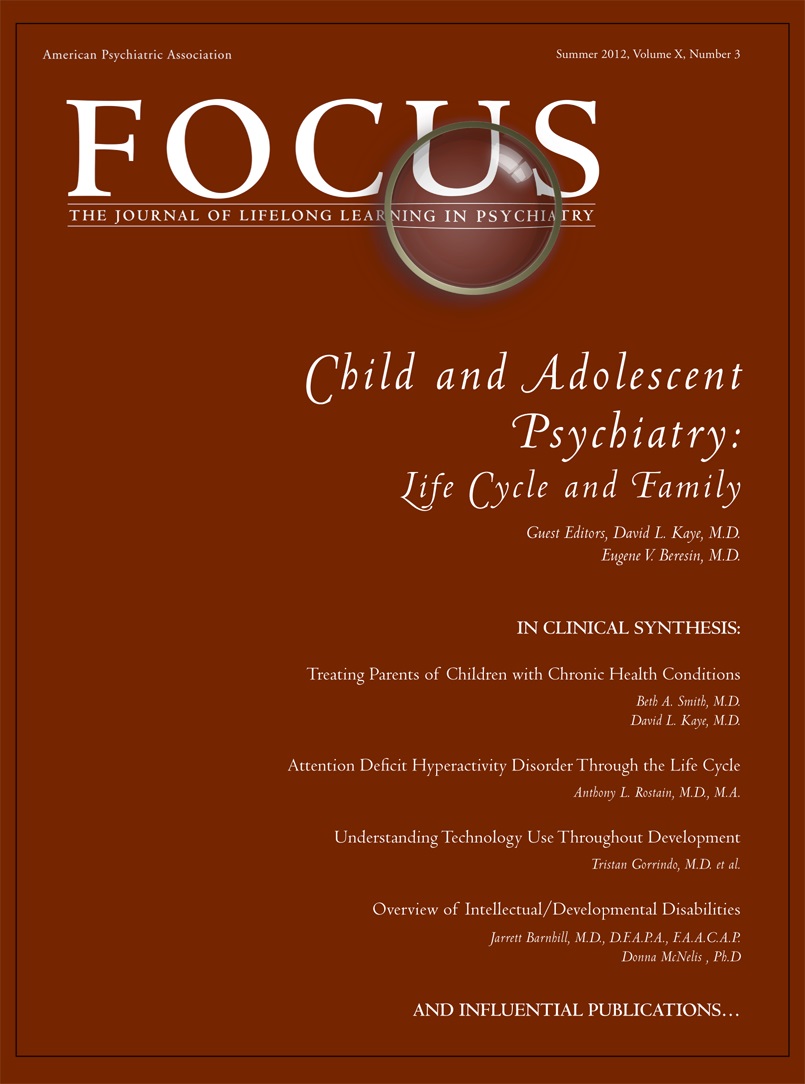Attention Deficit Hyperactivity Disorder Through The Life Cycle
Abstract
It is estimated that 5%–8% of school-aged children and 4% of adults in the United States suffer from some form of attention deficit disorder and that the incidence of the disorder is increasing in the population. Although it is the most widely studied behavior disorder of childhood, its etiology remains unclear, its outcome is variable, and its treatment is both complex and moderately successful. Advances in neuroscience have provided new insights into the pathophysiology of ADHD, pointing to key neural circuits involved in attention, behavioral control, learning, and reward maintenance that appear to be underperforming in patients with the disorder. Moreover, the etiology of this heterogeneous disorder points to the key role of genetic x environment interactions during prenatal and perinatal periods. Clinical assessment of ADHD requires a comprehensive approach, including gathering a detailed developmental history, obtaining data from scales and structured interviews, screening for comorbid conditions, and obtaining psychological testing where indicated. The mainstay of treatment is a multimodal approach combining medications and psychosocial interventions that are tailored to the patient and family’s priorities. Optimal clinical care necessitates ongoing monitoring of treatment response and adverse reactions in a longitudinal framework that is commonly used in managing chronic disorders.



